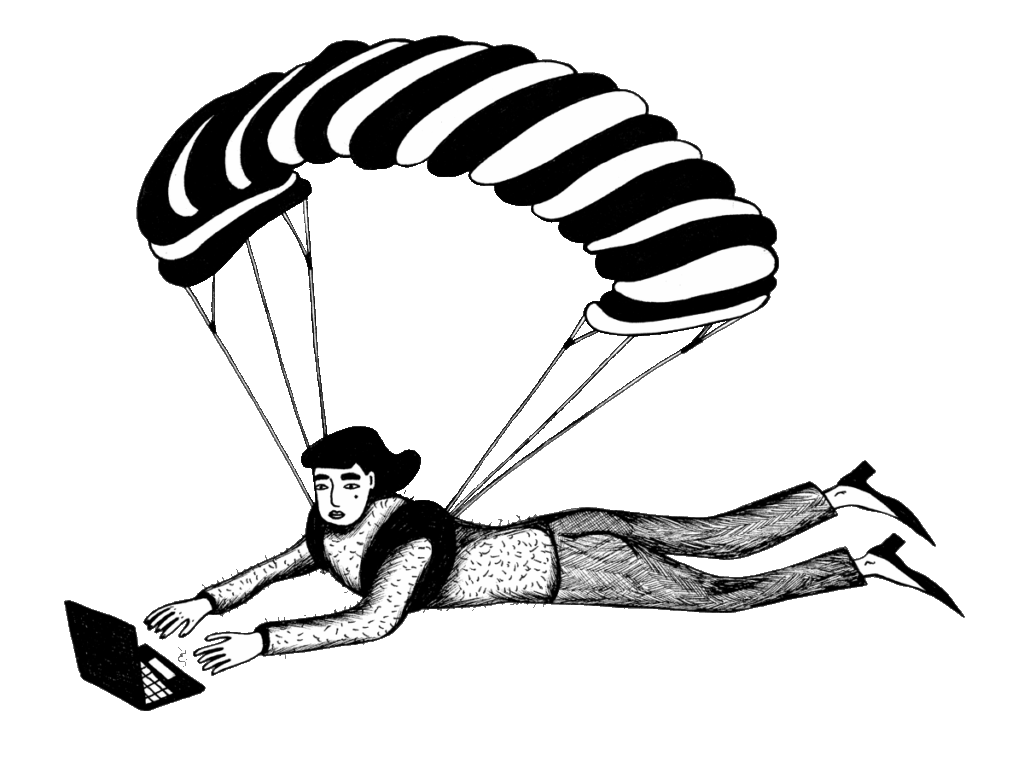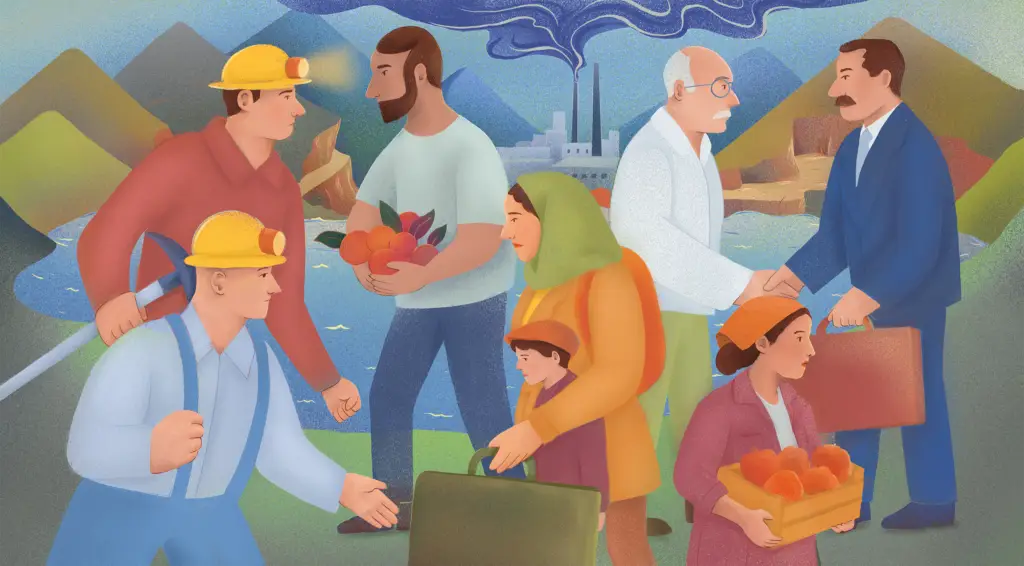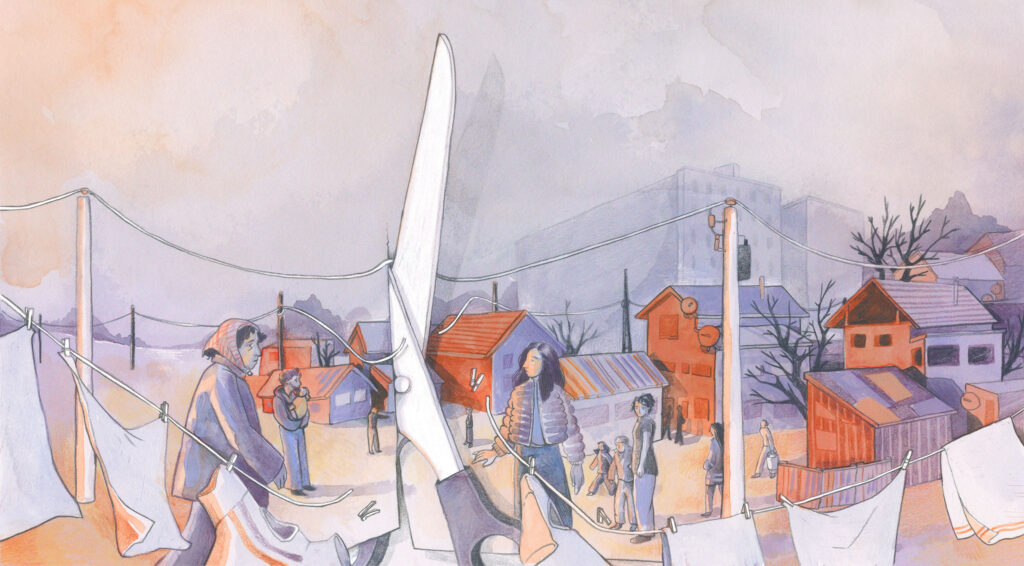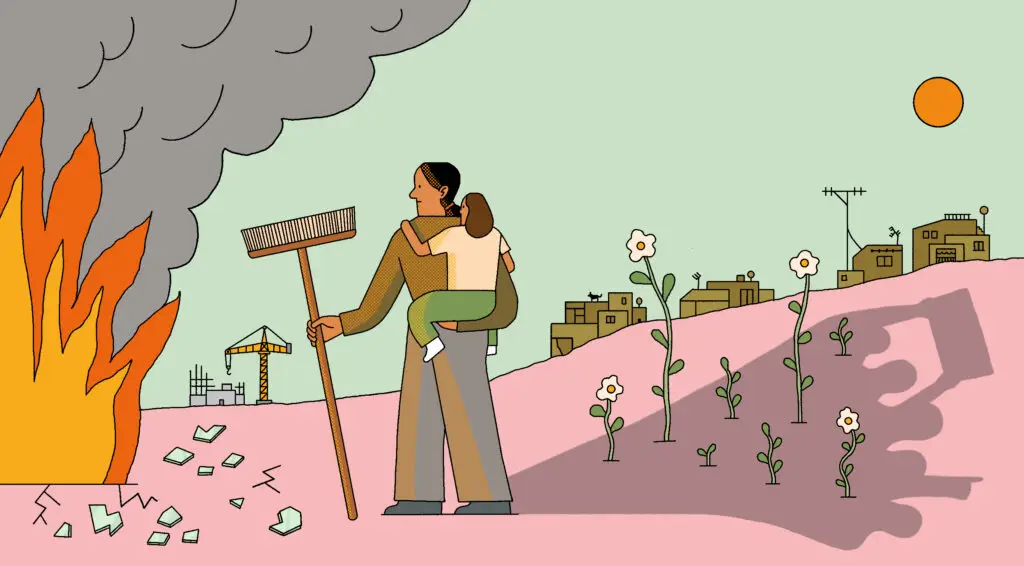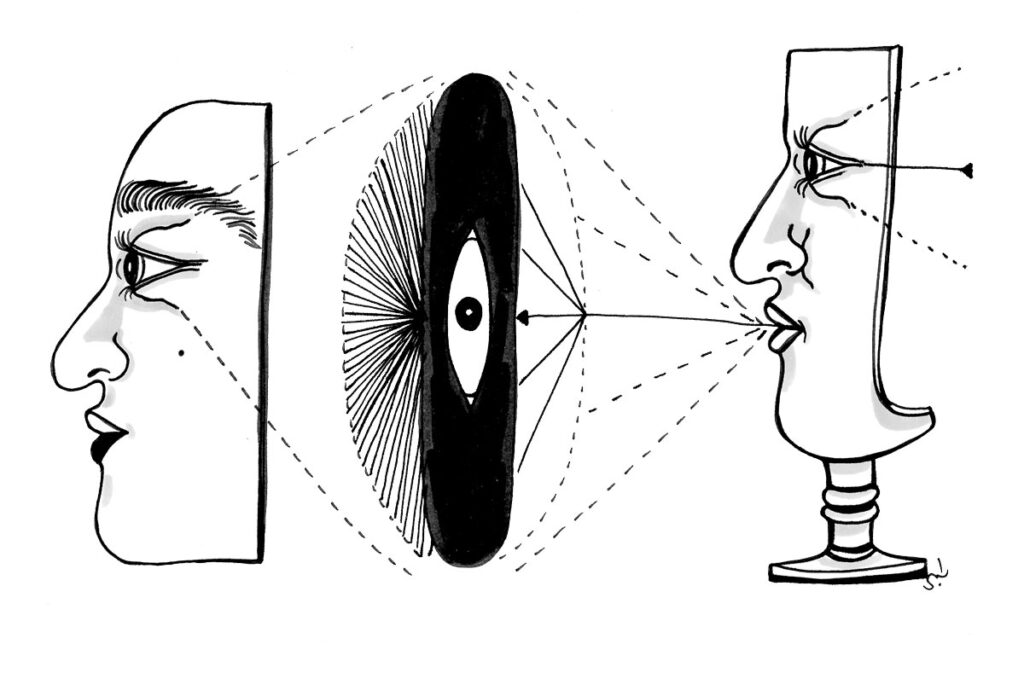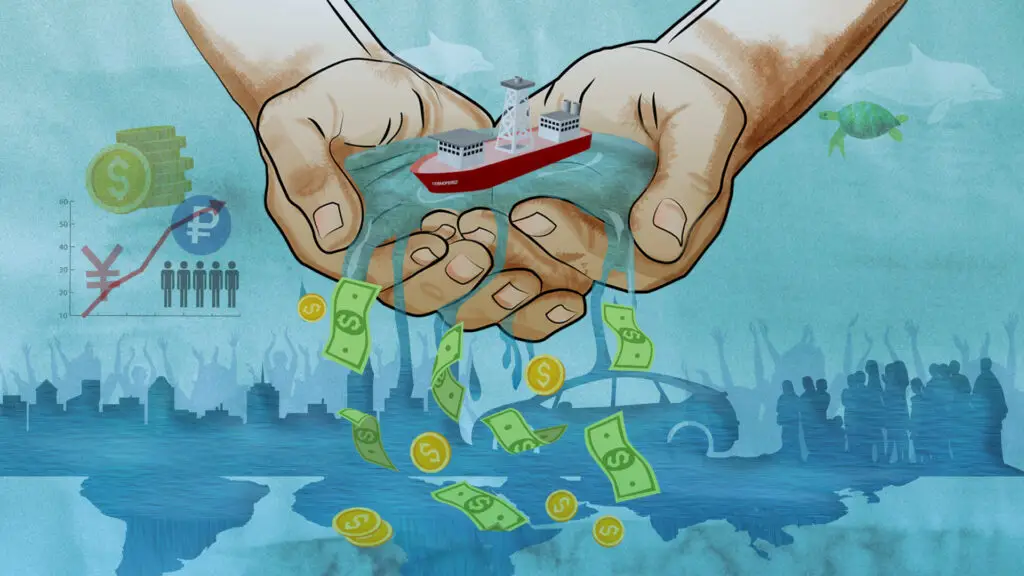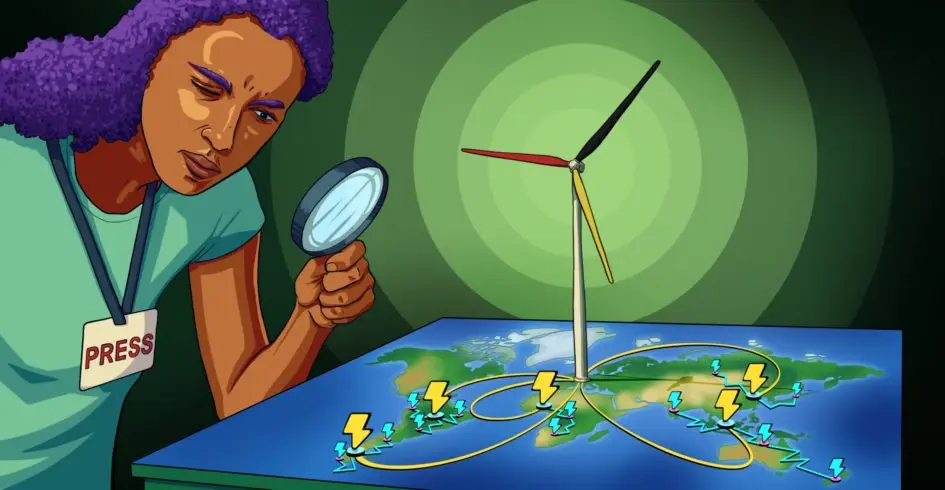
Drinking in inequality: the fight against lead contamination in Lahore, Pakistan
- Written by Anmol Irfan
- Edited by Zahra Salah Uddin
- Illustration by Walker Gawande
In a working class neighborhood in Punjab, miscarriages and developmental issues started appearing at alarming rates. Now, a political movement is working to get the government to take action to protect citizens from contamination.
When Dr. Alia Haider was holding one of her recently started health camps in Shareef Pura, a working-class neighborhood in Lahore, one of her patients was a young girl. When she first approached Dr. Haider for a check-up, the latter assumed that the young girl was nine or ten years old judging by her physical appearance. It was when the patient was asked her age that it was revealed she was 17 years old.
Dr. Haider quickly realized that this wasn’t a one-off situation and many of the children and youngsters in that area had stunted physical growth, which was accompanied by a host of recurring health issues as well.
“When I was carrying out health camps in Shareef Pura nine months ago, I saw that the children were malnourished, blackened teeth and gum issues were common and women frequently reported miscarriages and stillbirths. All of these issues quickly made me realize that this area probably had lead,” she shares.
After sampling 300 houses, including blood, soil and water samples – the results became shockingly clear and Dr. Haider realised her hypothesis was more than correct.
Amplifying marginalized issues
As the health secretary of the Haqooq-e-Khalq Movement (HKM), which is now working on its transition to a political party, Dr. Haider has long been leading HKM’s efforts to provide free health care to low-income communities across Punjab, with their efforts particularly focused on Lahore. It was during one of these regular health camps in communities where HKM has previously worked as well – such as vaccine awareness drives – that the lead crisis in Shareef Pura came to light.
This isn’t the only crisis that HKM is fighting in Lahore. As a community-focused organization aimed at amplifying marginalized issues, their health camps over the last three years have only been one aspect of the long fight to bring working-class voices out of the margins. Muzammil Kakar, the general secretary for HKM in Lahore, who joined the movement as a student at Punjab University, shares that many of HKM’s efforts revolve around securing some of the most basic needs of the citizens.
Speaking of how class differences impact much of the population he says “DHA [Defence Housing Authority] and Chungi Amar Sidhu are a mere 10-minute drive away from each other, but while DHA has every facility, Chungi barely has clean water or sanitation. This is the difference Haqooq-e-Khalq wants to erase,” while adding, “local issues are mainly water, health, and education which we are campaigning for.”
The health camps became a key fixture of HKM’s efforts in recent years when they realized the extent to which many of these communities needed urgent intervention.
"Inequality begins in the crib"
When this particular issue of high lead levels came to light in Shareef Pura in one of their camps, Dr. Haider and Muzzamil along with the team engaged Dr. Nousheen Zaidi, a cancer biologist who took samples and tested just how bad the situation was. Currently, Dr. Zaidi’s team of researchers is compiling a report shaped by studies done amidst the population of Shareef Pura in order to present the findings to government departments and experts to help create an understanding of the change that is needed.
“The situation is worse than we imagined,” Dr. Zaidi said after which she went on to elaborate on the extent of the high lead levels and the dangers they pose.
WHO’s limit of manageable lead levels in water is 10 micrograms per decilitre and we recorded 1550 micrograms per decilitre in the area's tap water, which residents drink directly.
Dr. Zaidi
The high lead levels are leading to severe health consequences. 36% of women reported miscarriages in Shareef Pura, and in situations like these as Dr. Zaidi describes it, “inequality begins in the crib.”
Children face severe brain developmental disorders and stunted physical growth as well as behavioral disorders due to such dangerous lead exposure. When residents were asked if they could ensure safer conditions by accessing filtered water, most if not all said it was too far for them to bring home regularly and no one in the community can afford bottled water or purification filters.
According to the World Health Organization, high levels of lead exposure can cause coma and death, but there is no safe level of exposure for children. “Even blood lead concentrations as low as 5 µg/dL may be associated with decreased intelligence in children, behavioural difficulties and learning problems.” Yet nearly one third of the world’s children have exposure at this level- the majority of which live in South Asia, according to UNICEF.
Lead exposure can lead to multiple health issues and disabilities, and accounts for an estimated 900,000 deaths per year. Moreover, the costs are reflected in economic losses: a 2013 study found that lead reduced the global GDP by 1,2%. Low and middle income countries are hit the hardest.
Although the problem is global and spread in low and high-income countries, there are proven solutions. Instituting monitoring systems to identify areas affected, introducing bans on leaded paint and recycling of lead batteries, and providing treatment and healthcare to effected individuals are some of the proven tactics to fight lead poisoning.
Equally dangerous lead levels in the soil and in residents’ blood samples have led Dr. Zaidi and her team to start raising awareness both online and offline regarding the dangers of lead poisoning and why this needs to be acted upon immediately.
“There’s not much awareness about the dangers of lead and the scale at which this crisis is occurring which is not happening at this scale anywhere else in the world,” says founding member Tabby Spence. “People don’t understand what it is and what it does. In most cases, people won’t know that it’s lead poisoning and that’s why it’s really important to raise awareness about lead poisoning and how dangerous it is, and its impacts on the human body. Journalists particularly have a major opportunity to make the community more aware.”
In this space, among several other environment-related issues, we will discuss the case of Shadipura, -a residential locality in Lahore with numerous iron foundries. This area's water and soil samples are highly contaminated with lead—Shadipura a thread. https://t.co/NlO9BJiJWR
— Nousheen Zaidi (@Nosheen_Z) May 14, 2022
Beyond just building awareness to garner more support, Dr. Zaidi wanted to take quick action on the ground, which is why she set up a health camp to provide children in the area with iron supplements after consulting pediatricians. Unfortunately, she points out that this is an extremely short-term solution.
Even though the team will go back to check on whether these iron supplements have helped decrease blood lead levels in two months, they are skeptical of any real change until the environmental crisis is targeted and solved.
Another small step that Dr. Zaidi has asked residents to take is to stop boiling the water before they drink it. “Most people think that boiling water cleanses it of impurities. While that’s usually true, when it comes to lead, boiling actually increases its concentration in the water as water evaporates when boiling,” she says. But she remains unhopeful that these small measures will make a difference in a crisis of this scale.
Even their health camps face limitations as HKM is a small independent body. “We started these free health camps as a gesture of goodwill and funded them through public donations but as an individual organization we don’t have the capacity to carry them out indefinitely – even though we’ve managed up to three times a week in some areas,” shares Spence.
Instead, the team is focusing much of its efforts on engaging with local authorities and government bodies in the hopes that they can bring about real change in the area which will provide long-lasting relief for residents.
Stopping pollution at the source
The first demand is to regulate the factories that are the cause of this lead crisis in the first place. “The community says there are 70 or so small iron foundries in the surrounding areas,” Spence says while adding, “Long-term solutions involve two things. First is stopping the source of the pollution, second is cleaning up and ensuring people are not exposed to pollutants already out there.”
Dr. Zaidi and her team are collecting data, along with Dr. Haider to be able to present their findings to the relevant environmental and water regulating authorities. Their demands include the placement of water purification filters within communities like Shareef Pura as well as measures to remediate the soil to make it safer for children to roam around in that environment.
In the shorter term, the solution also lies in the government taking what HKM has been doing to a greater scale and providing free health care to limit the effects of lead poisoning as much as possible. “If you go visit the environmental protection agency and ask why they aren’t regulating these factories, they’ll simply blame other institutions or say if we regulate them they’ll simply leave and go to Bangladesh or somewhere else. So we can’t regulate. Even though there are very good environmental regulations on the books, in Pakistan they are not being implemented,” Spence says of some of the barriers they have faced.
A spokesperson at WASA (Water And Sanitation Authority) Lahore, denied their responsibility in the crisis. “We don’t supply water to most of the area, and where we do, the water from the pump is pure. However, once it stays in the surroundings after the motor is switched off, that stagnant water is at risk of being contaminated,” he said while adding that residents should collect water as soon as the motor is turned on. Requests by Unbias the News to the city’s Environmental Protection Agency were not met with a response.
However, constant meetings with authorities without any action have left the team at HKM unhopeful about what immediate action might be taken.
“This is a structural problem, and a small group of people cannot change it on their own." says Spence. "We are working to get fair representation of the people of those communities so that they can influence decisions. That's not the case at all right now but that's not a band-aid or quick fix, it’s a long term democratic solution,” Spence added.


